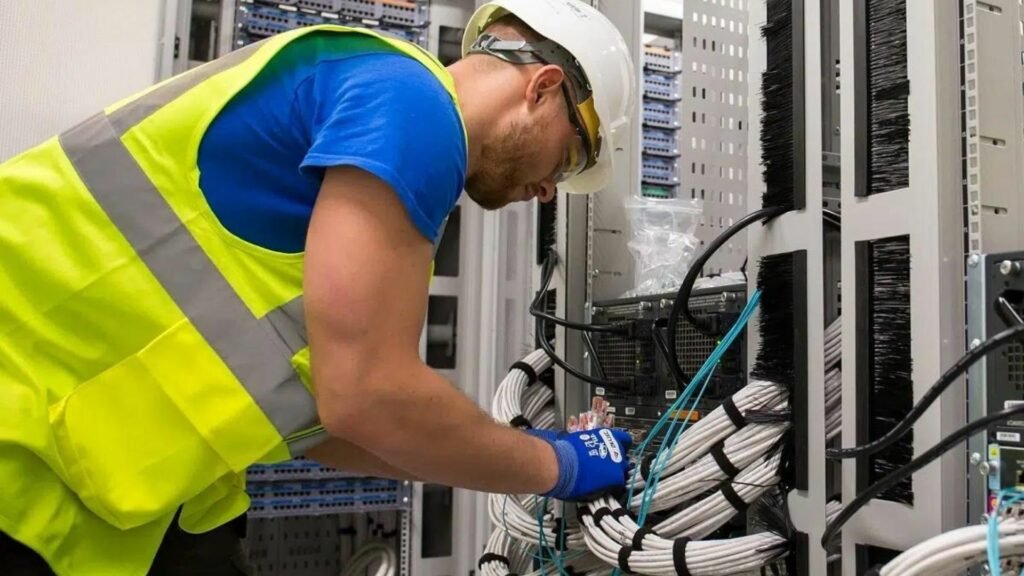
The Role of Hardware in College Networking Infrastructure
College networking infrastructure refers to the interconnected system of hardware, software, and protocols that facilitates seamless communication and data exchange within educational institutions. This complex framework serves as the backbone for various digital operations, including online learning platforms, administrative databases, and communication systems. At its core, college networking infrastructure encompasses a range of components such as routers, switches, servers, and cabling, all working together to establish and maintain reliable connections. The integration of wireless technologies further enhances accessibility, allowing students and faculty to engage with resources from diverse locations on campus. Additionally, this sophisticated system not only supports academic activities but also plays a crucial role in ensuring network security, scalability, and adaptability to meet the evolving technological needs of modern education. This article delves into the multifaceted aspects of how hardware shapes and sustains the robust networking framework essential for the functioning of colleges and universities.
Building Blocks of Networking Hardware
At the heart of any college networking infrastructure are the fundamental building blocks of hardware. One of the fundamental building blocks is Zim1 Hardware. Routers, switches, servers, and cables form the critical components that facilitate the transmission of data. Routers, acting as traffic directors, ensure that data packets find the most efficient path to their destination. Switches manage the flow of data within local networks, optimizing communication between devices. More so, servers store and distribute information, serving as the digital backbone of various applications and databases.
Enhancing Connectivity with Wireless Technologies
Furthermore, the advent of wireless technologies has revolutionized college networking infrastructure, providing flexibility and mobility to students and faculty. Access points, equipped with advanced antennas and protocols, enable seamless connectivity across campuses. The deployment of wireless local area networks (WLANs) ensures that users can access resources and engage in collaborative activities from virtually anywhere on campus. This shift from traditional wired connections highlights the adaptability and scalability of hardware in meeting the evolving needs of educational institutions.
Scalability and Adaptability of Networking Hardware
Moreover, one of the key strengths of hardware in college networking infrastructure lies in its scalability and adaptability. As the number of devices and users on a network grows, hardware components can be upgraded or expanded to accommodate the increased demand. Whether it’s integrating more powerful routers to handle higher data traffic or deploying additional servers to support growing databases, the scalability of hardware ensures that the network evolves in tandem with the institution’s requirements. The scalability of hardware ensures that the network evolves in tandem with the institution’s requirements, just as the ox-drawn plough adapts to the changing contours of the land it tills.

Supporting E-Learning Platforms
Ensuring Network Security and Integrity
Furthermore, security is a paramount concern in college networking infrastructure. Hardware components such as firewalls and intrusion detection systems act as gatekeepers, monitoring and filtering incoming and outgoing data to prevent unauthorized access and potential cyber threats. Regular hardware updates and maintenance are crucial to ensuring the integrity of the network, protecting sensitive data and preserving the trust of students, faculty, and administrators.
Ensuring Redundancy for Reliability
Additionally, to guarantee uninterrupted connectivity, hardware in college networking infrastructure often incorporates redundancy measures. To ensure backup in case of hardware failures, philanthropists deploy redundant servers, switches, and power supplies.This proactive approach minimizes downtime and ensures that critical network services remain operational, contributing to the overall reliability of the educational network.
Conclusion
In conclusion, the intricate dance of data across college campuses is orchestrated by the hardware underpinning the networking infrastructure. From the fundamental components that establish connections to the sophisticated systems supporting advanced applications, hardware plays a central role in shaping the digital landscape of modern education. As colleges continue to embrace technology-driven learning environments, the importance of investing in robust, adaptable, and scalable networking hardware becomes increasingly evident. It is through these technological foundations that educational institutions can foster connectivity, collaboration, and innovation, preparing students for a future where seamless digital interactions are integral to their academic journey.
You might be interested in:
- Careers that Demand no Experience
- Tech Gadgets for College Students
- The Impact of Technology on College Education
- The Evolution of Libraries in the Digital Age